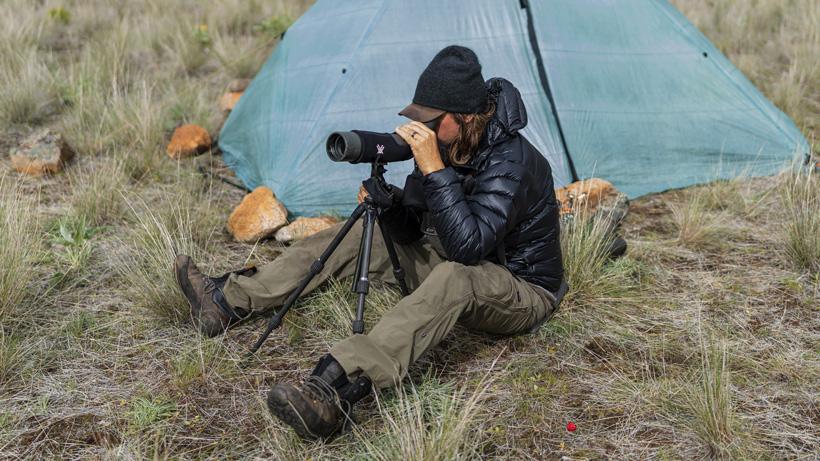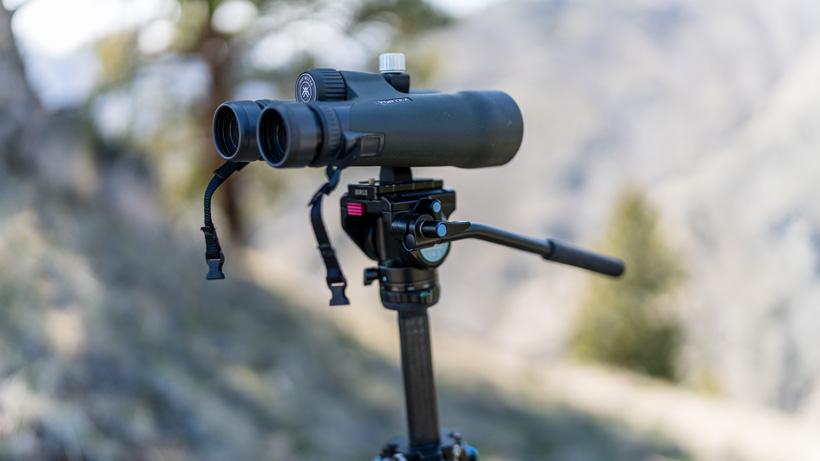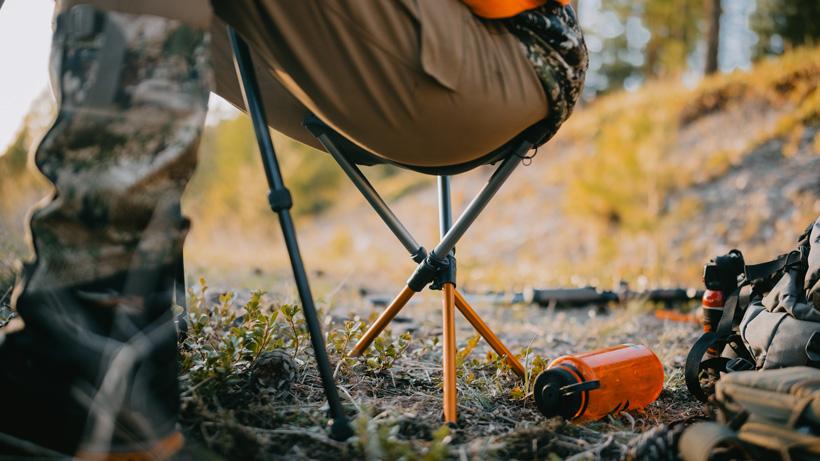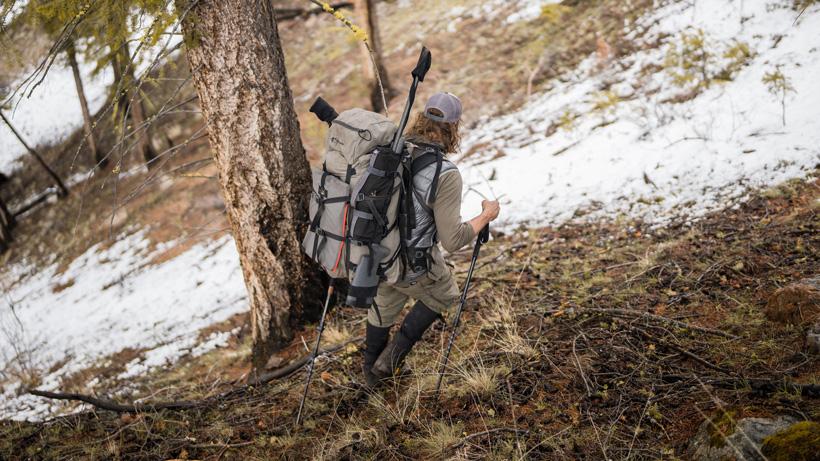




Solid-colored clothes are a great spring bear option to help notice when you have ticks on you.

Binoculars mounted on a tripod for all-day glassing.

Glassing stool for getting off the ground to glass in comfort.

Bright headlamp for those long hikes back to camp.

Trekking poles; the four-wheel drive of backcountry hiking.
The spring thaw has begun, and that’s got us thinking about lacing up the boots and getting outside. Across the West, spring black bear tags are relatively easy to get and present opportunities to get out and have a great adventure. A lot of hunters use bear season to get out and test new gear, put their glass to work and enjoy the sights and sounds of springtime. Deer and elk can often be spotted out feeding on open hillsides, making for eventful days glassing. Most of the same gear you use during fall big game hunts can be used during spring bear hunts, but make sure you’ve got a few of these key pieces to let you stay out longer and be more comfortable.
When the weather warms up and the snow starts to melt, bears aren’t the only animal that wakes up and starts moving. Ticks are commonly found during springtime activities sitting on the tops of the grass. While moving across hillsides or down logging roads, bear hunters often will pick up ticks on their boots and pant legs. For this reason alone, we recommend wearing solid-colored clothing so ticks can easily be spotted and pulled off your clothing. Since bears rely on their noses much more than their eyes, camouflage clothing is not necessary.
Finding bears is a waiting game. Many successful bear hunters will tell you to find a good looking spot and stay there. Glassing for bears is generally done with binoculars because they provide the widest field of view so you can spot movement as they move through the vegetation. The combination of time spent glassing and the need for stability makes a binocular adapter and tripod a gamechanger for finding bears. We’re particularly excited about the Tricer Bino Adapter as a 2 oz. Arca-Swiss compatible option that fits most binos. Other options include the quick release Vortex bino adapter as well as the Aziak bino clamp for rangefinding binoculars without a thread in the front.
Long days of glassing for bears can wear your back out quickly. That, combined with the aforementioned challenge of keeping ticks off you, warrant a lightweight stool or at least a glassing pad. Sitting up off the ground makes for easier glassing with a tripod and allows hunters to stay out longer and be more comfortable. The Hillsound BTR Stool (12.6 oz) and Big Agnes Skyline UL Stool (1 lb 2 oz.) are both lightweight options that you’ll barely notice in your pack, but will be glad to have them. These stools also pack down small enough to take up minimal space in your pack.
Many bear hunters find success in the evenings with bears being most active in the early morning and right before dark. This rule has its exceptions, but with a lot of bears getting shot before it gets dark, it’s important to be able to safely recover a bear and get back to your truck. We recommend always carrying a lightweight power bank that holds enough power to recharge your phone and headlamp. An iPhone requires roughly 3,000 milliamp hours (mAh) while most rechargeable headlamps take about 3,000 mAh to fully charge. A power bank like the Goal Zero Flip 24 weighs in at only 4.6 oz. and backs 6,700 mAh of power. Around the GOHUNT office, we’ve been using the PEAX Backcountry Duo Headlamp, which has a brightness of a whopping 1,000 lumens while also being able to run for up to 69 hours at a decreased brightness.
Rechargeable headlamps are not required, but if you’re using a headlamp that runs on AAA batteries, we recommend putting in fresh batteries before heading out and packing at least one set of replacement batteries.
Bear hunting can be rather leisurely up until it’s time to recover and pack out a bear — especially early in the season when the steep, south facing slopes are the first areas on the mountain where snow melts off and green chutes of grass begin to show. The steep areas may be an easy spot to find and get a cross canyon shot off on a bear, but can be challenging to recover and pack bears out of. Factor in inclement weather or snowmelt running off these hillsides and you’ll see a need for something to help keep you upright. Trekking poles are often overlooked by bear hunters using trails or logging roads to navigate, but should be in your pack to help get a bear out of a steep and deep canyon and back to level ground.